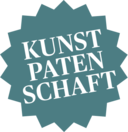Trombone
1732, Manufacturer: Michael Leichamschneider
Trombone
As can clearly be seen from early trombones, the design of this type of instrument has basically remained unchanged since the time of the Renaissance. The trombones belong to the family of labrosones, in which a primary tone is produced by agitating the whole column of air within the instrument with the vibration of the lips. Through over-blowing, the player can produce notes of the over-tone row. Unlike the natural trumpet in which the gaps between these upper partials cannot be filled in, the trombone has a slide with which the column of air can be constantly elongated or shortened. This means that the instrument is capable of producing all the notes of the chromatic scale across its entire range. Until the end of the Baroque era, the various parts of the instrument had simple ‘plug’ joins and it could therefore be taken apart. Later, the joins were soldered for greater stability. During the 18th century the walls of the instrument became thinner, which influenced the response and the tone. Compared to modern trombones these instruments also have a very narrow bell. (rh)
Lit.: Rudolf Hopfner: Masterpieces from the Collection of Historic Musical Instruments. A Short Guide through the Kunsthistorisches Museum Vienna, Vol. 1, Vienna 2019
Object data
Object Name
Trombone
Culture
Austria, Vienna
Dated
1732
Manufacturer
Michael Leichamschneider (1676 Osterberg - 1746 Wien) - GND
Dimensions Cover size is a museum or exhibition-specific information. It does not specify the real dimensions of the musical instrument.
1100 mm x 220 mm x 110 mm
Image rights
Kunsthistorisches Museum Wien, Sammlung alter Musikinstrumente
Inv. No.
Sammlung alter Musikinstrumente, 255
Permalink (citable Link) to this page: www.khm.at/en/object/84956/
Kunst & Patenschaft
This object is still without a Art Patron. Accept the patronage and make sure that this cultural treasure is preserved for future generations.
Your donation is a direct and sustainable contribution to the scientific documentation, research, restoration, and presentation of the artworks of the Kunsthistorisches Museum Wien.

